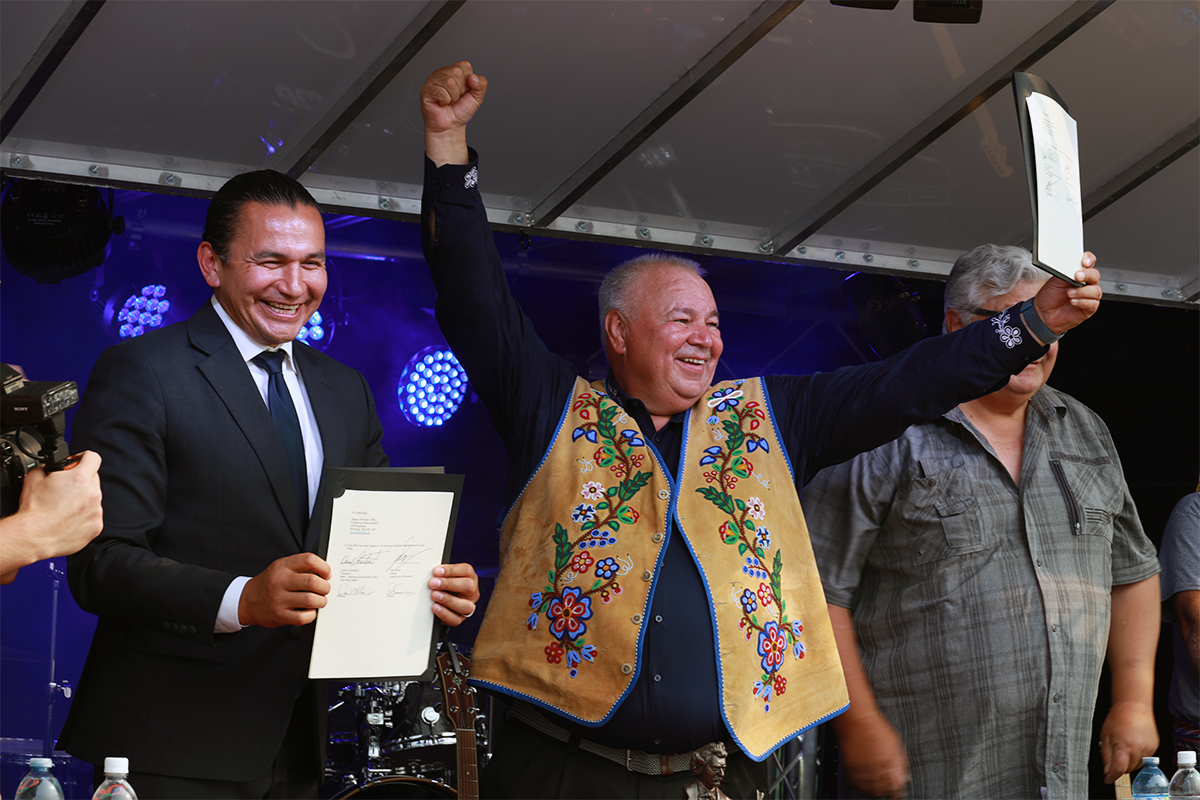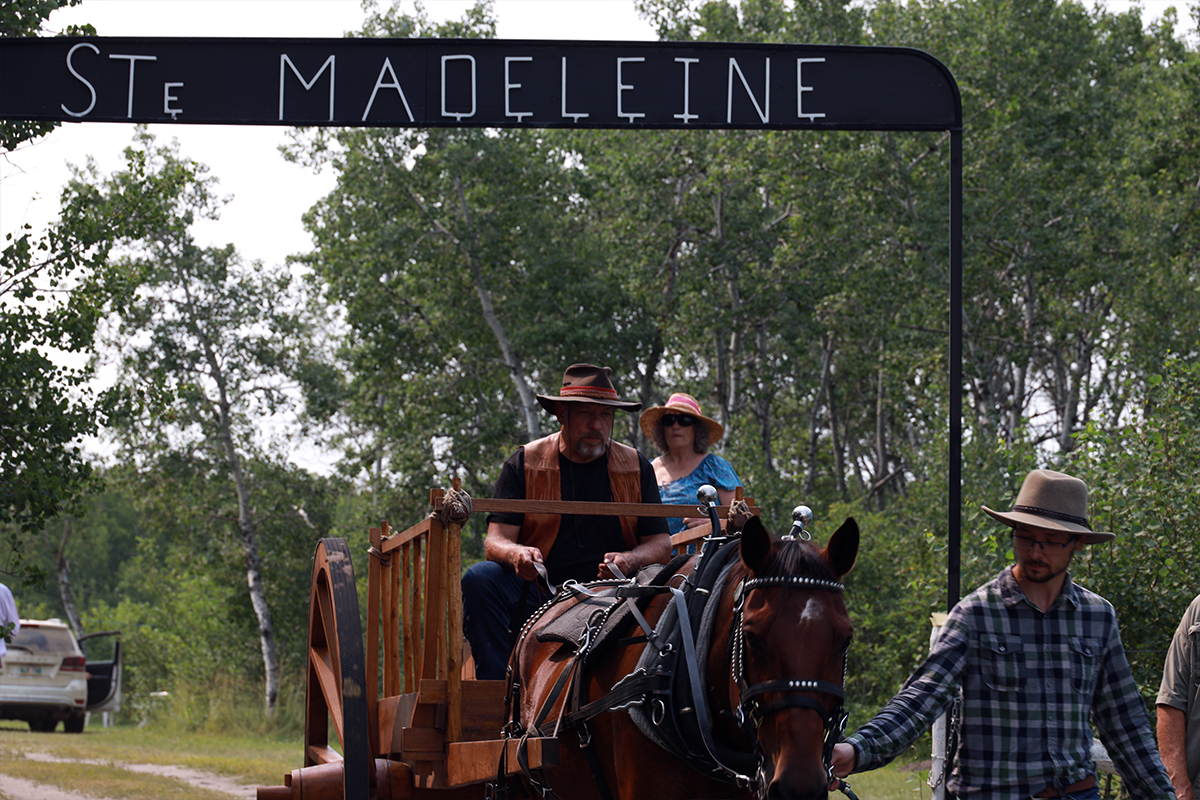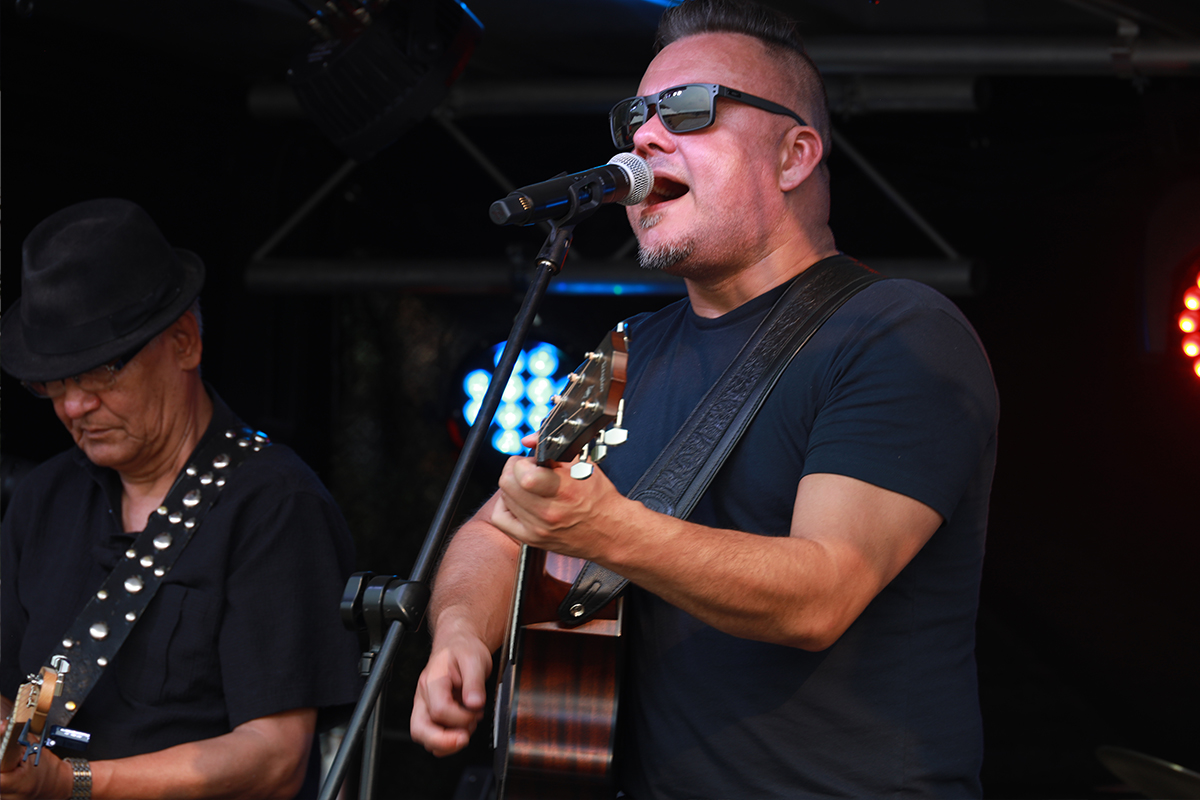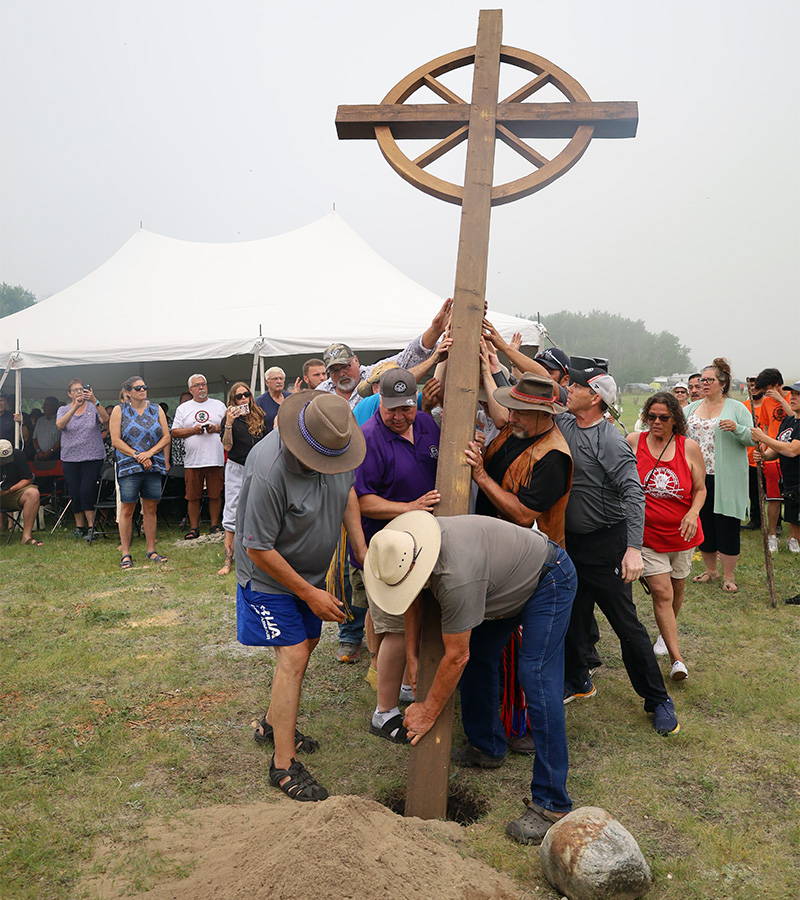- Home
- |
- Our Culture
- Louis Riel
- Métis Firsts in North America
- Métis Minute
- Who are we?
- Métis Nation Database
- Kids' Corner
- I Love to Bead Month
- |
- Departments / Affiliates
- Citizenship
- Culture & Heritage
- Early Learning & Child Care
- Economic Development
- Engagement and Consultation
- Energy, Infrastructure & Resource Management
- Health & Wellness
- Housing and Property Management
- Infinity Women Secretariat
- Louis Riel Capital Corporation
- Louis Riel College
- Louis Riel Institute
- MEDOCare
- Métis Child and Family Services Authority
- Métis Employment & Training
- Métis Justice Institute
- Métis Rights & Constitution
- Michif Language
- Provincial Education
- Red River Métis Business Development Corporation
- Red River Métis Community Resource
- Red River Métis Fur Company
- Red River Métis Veterans
- Riel House
- Sixties Scoop
- Youth
- |
- Government
- |
- Jobs
- |
- News
- |
- Contact
From ashes to honour: Red River Métis reclaim Ste. Madeleine
July 25, 2024
 On the opening day of Ste. Madeleine Métis Days, President David Chartrand and Manitoba Premier Wab Kinew righted a historical wrong by signing a memorandum of understanding, which - among other things - immediately returns
On the opening day of Ste. Madeleine Métis Days, President David Chartrand and Manitoba Premier Wab Kinew righted a historical wrong by signing a memorandum of understanding, which - among other things - immediately returns
100 acres of land to the Red River Métis.
Red River Métis Citizens gathered in Ste. Madeleine from July 19-21, 2024, to witness history and pay their respects to a once thriving Red River Métis community.
The village was razed to the ground by the government in 1939 to create space for cattle pasture. Citizens returned home from their summer's labour to find ashes where there had once been homes and a community. Families found their clothing, household supplies, schoolbooks, and food torched, and dogs shot. Oral tradition has suggested that Ste. Madeleine's church was dismantled and used to build a pig barn in St. Lazare.
On the opening day of Ste. Madeleine Métis Days, President David Chartrand and Manitoba Premier Wab Kinew righted a historical wrong by signing a memorandum of understanding (MOU), which - among other things - immediately returns 100 acres of land to the Red River Métis.
"I made a promise to the people of Ste. Madeleine and the families: one day, there will be a time when this injustice will be set right," said President Chartrand. "One day, there will be a leader that'll come to us. We waited for over half a century for this. And that leader is here now. His name is Wab Kinew."
The MOU was signed by President Chartrand; Premier Kinew; Minister John Fleury, Executive of the Southwest Region and descendant of Ste. Madeleine; and Gambler First Nation Chief David LeDoux at the site where Ste. Madeleine once existed, with a large standing ovation. Red River Métis MLAs Bernadette Smith, Minister of Housing, Addictions, and Homelessness; and Renée Cable, Minister of Advanced Education and Training, also attended the ceremony.
"The goal of what we're trying to accomplish here is to right a historical wrong. My presence here as the Premier of Manitoba is to indicate what was done to Red River Métis here in the past was wrong and should never have taken place," said Premier Kinew, adding that the signing marked a new day in Manitoba. "You have a Red River Métis National Government in the MMF. You, as Red River Métis Citizens, have more opportunity, education, wealth, and potential in the future to achieve more than before, and you have a friend in the provincial government here in Manitoba."
The MOU marks the first step in returning the land to the National Government of the Red River Métis. The MMF, Government of Manitoba, and Gambler First Nation will work behind the scenes to iron out the details and put the memorandum into motion. President Chartrand said there have been many ideas of what will become of the land.
"One of the commitments we will be making is that a monument will be built here. We will recognize and ensure that every family and every name will be enshrined here to remember and never forget what happened to them and what happened to our people," he said.
 Saturday's opening ceremony featured a Red River Métis cart, which was transported in by horse and
Saturday's opening ceremony featured a Red River Métis cart, which was transported in by horse and
parked at the front of the grounds.
The site is located in the Municipality of Russell-Binscarth. Hundreds of Red River Métis settled in Ste. Madeleine in the late 1800s and early 1900s, following the reign of terror that happened in the heart of the Homeland, which is now Winnipeg.
President Chartrand said Ste. Madeleine is the first piece of land taken from the Red River Métis that has been given back.
"It bothers me and every Métis family here that a cow can be worth more than a Métis life, worth more than a Métis child, Elder, or loved one. No one in this country said, 'no.' No one in this country said, 'it's wrong. You can't shoot their dogs and burn their houses.' How can that be that no one stood up?" he said.
Gambler First Nation borders the lands of Ste. Madeleine and both the Red River Métis and the First Nation have residents buried in the cemetery. Chief LeDoux said it was an honour to be a part of the signing.
"My grandfather and the Métis built a church at Gambler (First Nation), and that was done (by) a handshake," he said. "I was proud that (President) David Chartrand phoned me and asked me to be a part of this. We did a handshake, but now we have to do things on paper."
After the signing, many Citizens gathered for photos of the Premier and President, all while thanking the pair for this act of reconciliation.
"It's a proud day to show that the Red River Métis Government doesn't back away. We never forget, and we never give up. Be proud today to be Red River Métis," said President Chartrand.
 Many Red River Métis musicians graced the stage throughout Ste. Madeleine Métis Days, including the
Many Red River Métis musicians graced the stage throughout Ste. Madeleine Métis Days, including the
DJ St. Germain Band, who played a tribute to the late Ray St. Germain.
Three days of culture, community, and music
Many hundreds of Red River Métis Citizens converged on Ste. Madeleine Métis Days, hosted by the MMF, in partnership with the Southwest Region and the Ste. Madeleine Heritage Local. Many made the trip from as far as Ontario, British Columbia, and the United States to celebrate Red River Métis culture.
Saturday's opening ceremony featured a Red River Métis cart made by Armand Jerome, which was transported in by horse and parked at the front of the grounds. The three-day gathering was also filled with some of the best Red River Métis music, including the Dutiaume Band, Gary Lepine Band, A.R Cash, and a special tribute to Red River Métis legend Ray St. Germain, featuring his son, the DJ St. Germain Band.
Red River Métis Citizens had opportunities to participate in competitions throughout the weekend, including a cribbage tournament, a bannock-making competition, jigging contests, bingo, and a slingshot contest. Citizens also had the opportunity to attend workshops about Red River Métis culture, like jigging, bannock making, snare making, beadwork, kids' activities, and more.
On Sunday, Mass was held on the cemetery grounds. At the beginning of the ceremony, in a symbolic gesture, Red River Métis Citizens, led by President Chartrand, carried and erected a new cross on the grounds due to the old one being damaged several years ago.
"To see it being raised again here in memory of our ancestors in Ste. Madeleine and all of the descendants throughout the years to come - it's a symbol of the hardship, trauma, love, and joy that our people have felt over the years, and it will stand in memoriam forever," said Minister Fleury.

On Sunday, Mass was held on the cemetery grounds. At the beginning of the ceremony, in a symbolic gesture, Red River Métis Citizens, led by President Chartrand, carried and erected a new cross on the grounds due to
the old one being damaged several years ago.
Preserving our history
The connection to these lands runs much deeper for some than attending Ste. Madeleine Métis Days once a year. Gail Welburn holds a familial connection to the grounds and said the MOU signing was huge for her.
"My grandfather was displaced from our area here. He was 27 years old when his dog was shot, and his home was burnt," she told MMF Spotlight. "For us, it's come full circle. It's come back today. I'm here today in respect and recognition of what my grandpa went through on this land."
Welburn first came to Ste. Madeleine three years ago. She said one of her biggest regrets was that her grandfather always wanted to bring her to the historic site, but she was busy working and being a mom.
"My grandfather isn't here any longer, so I missed a wonderful opportunity," she said. "It makes me very proud because I know the people here went through a lot. It's been a long wait. My mom is too old to travel here for the celebration, but I'm here, and I'll take the message home and say, 'it's ours again.'"
Minister Fleury also holds Ste. Madeleine very close to his heart. His grandparents moved to Ste. Madeleine and lived on the lands, and his father, Elder George Fleury, was born in Ste. Madeleine in 1935, and witnessed the destruction of the town firsthand.
"When they came home, all they saw were the stove chimneys, stones, and the bedposts because the government had burned out their homes and shot their dogs. My father often tells the story of how when they topped the rise, all he saw was his dad's shoulders going up and down, weeping," Minister Fleury told MMF Spotlight. "It's incomprehensible to know that everything you own is gone because they wanted to put cattle out here in place of the Métis people."
As one of the signatories of the MOU, Minister Fleury said the signing was an emotional moment for him, and he's glad to see the wheels in motion to rectify an injustice that should have been resolved years ago.
"It was such a historical moment for the descendants of Ste. Madeleine. We've lost generations of our Elders through the years, and they always believed that someday we would get Ste. Madeleine back - and this is just the beginning," he said. "It's such a phenomenal, historical, emotional day. There were many descendants and friends of the Métis in the audience, and when we were doing the signing, the tears were flowing freely. That's how much it meant to us. It pulled at the heart."
La fierté renaît des cendres : les Métis de la rivière Rouge récupèrent Sainte-Madeleine
 Le premier jour des Journées métisses de Sainte-Madeleine, le président David Chartrand et le premier ministre du Manitoba, Wab Kinew, ont redressé un tort historique en signant un protocole d'entente qui prévoit notamment la cession immédiate de 100 acres de terres aux Métis de la rivière Rouge.
Le premier jour des Journées métisses de Sainte-Madeleine, le président David Chartrand et le premier ministre du Manitoba, Wab Kinew, ont redressé un tort historique en signant un protocole d'entente qui prévoit notamment la cession immédiate de 100 acres de terres aux Métis de la rivière Rouge.
Les citoyens métis de la rivière Rouge se sont réunis à Sainte-Madeleine du 19 au 21 juillet 2024 pour assister à un nouveau pan d'histoire et rendre hommage à une collectivité métisse de la rivière Rouge autrefois dynamique.
En 1939, le gouvernement a entièrement détruit le village afin de créer un espace pour le pâturage. En rentrant chez eux à la fin de l'été, les citoyens ont découvert des cendres là où se trouvaient auparavant des maisons et une communauté. Les vêtements, les articles ménagers, les manuels scolaires et la nourriture avaient été brûlés et les chiens avaient été abattus. Selon les récits oraux, l'église Sainte-Madeleine a été démantelée pour servir à la construction d'une porcherie à Saint-Lazare.
Le premier jour des Journées métisses de Sainte-Madeleine, le président David Chartrand et le premier ministre du Manitoba, Wab Kinew, ont redressé un tort historique en signant un protocole d'entente qui prévoit notamment la cession immédiate de 100 acres de terre aux Métis de la rivière Rouge.
« J'ai fait une promesse à la population et aux familles de Sainte-Madeleine : un jour, nous corrigerons cette injustice », a déclaré le président Chartrand. « Un jour, un leader nous tendra la main. Nous avons attendu pendant plus d'un demi-siècle, mais ce leader est ici maintenant. Il s'appelle Wab Kinew. »
Le président Chartrand, le premier ministre Kinew, le ministre John Fleury, cadre de la région du Sud-Ouest et descendant de Sainte-Madeleine, et le chef de la Première Nation de Gambler, David LeDoux, ont signé le protocole d'entente sur le site de l'ancienne communauté de Sainte-Madeleine. La signature s'est soldée par une grande ovation debout. Les députées provinciales Bernadette Smith, ministre du Logement, de la Lutte contre les Dépendances et de la Lutte contre l'itinérance, et Renée Cable, ministre de l'Éducation postsecondaire et de la Formation, qui sont toutes deux des Métisses de la rivière Rouge, ont également assisté à la cérémonie.
« L'objectif est de réparer une erreur historique. Ma présence ici en tant que premier ministre du Manitoba vise à envoyer un message clair : les Métis de la rivière Rouge ont subi un tort dans le passé qui n'aurait jamais dû se produire », a déclaré le premier ministre Kinew, ajoutant que la signature marquait un nouveau jour au Manitoba. « La FMM est le gouvernement national des Métis de la rivière Rouge. En tant que citoyens métis de la rivière Rouge, vous disposez désormais d'un niveau accru de possibilités, d'éducation, de richesse et de potentiel pour réaliser plus de choses que jamais auparavant, et vous pouvez compter sur le soutien du gouvernement provincial. »
Le protocole d'entente marque la première étape de la restitution des terres au gouvernement national des Métis de la rivière Rouge. La FMM, le gouvernement du Manitoba et la Première Nation de Gambler travailleront en coulisses pour régler les détails et mettre en œuvre les dispositions du protocole. Le président Chartrand a mentionné que beaucoup d'idées concernant l'aménagement des terres ont été proposées.
« Nous avons entre autres pris l'engagement de construire un monument ici. Nous veillerons à ce que chaque famille et chaque nom soient reconnus et immortalisés ici pour que l'on n'oublie jamais ce qui leur est arrivé et ce qui est arrivé à notre peuple », a-t-il déclaré.
 Lors de la cérémonie d'ouverture de samedi, une charrette métisse de la rivière Rouge, tirée par un cheval, a été garée à l'avant du terrain.
Lors de la cérémonie d'ouverture de samedi, une charrette métisse de la rivière Rouge, tirée par un cheval, a été garée à l'avant du terrain.
Le site fait partie de la municipalité de Russell-Binscarth. Des centaines de Métis de la rivière Rouge se sont établis à Sainte-Madeleine à la fin des années 1800 et au début des années 1900, à la suite du règne de terreur qui a touché le cœur de la patrie, qui est maintenant Winnipeg.
Le président Chartrand a déclaré que Sainte-Madeleine est le premier terrain pris aux Métis de la rivière Rouge qui a été restitué.
« Il est troublant, pour moi et toutes les familles métisses d'ici, de penser qu'une vache puisse avoir une plus grande valeur que la vie d'un Métis, d'un enfant métis, d'un Aîné ou d'un proche. Personne dans ce pays n'a dit « non ». Personne dans ce pays n'a dit que c'était mal, qu'on ne pouvait pas abattre les chiens et brûler les maisons des Métis. Comment se fait-il que personne ne se soit insurgé? » dit-il.
La Première Nation de Gambler est installée aux abords des terres de Sainte-Madeleine. Des défunts des Métis de la rivière Rouge et de la Première Nation sont enterrés dans le cimetière. Le chef LeDoux a dit qu'il était honoré de signer le protocole d'entente.
« Mon grand-père et les Métis ont construit une église à Gambler (Première Nation), et cela s'est décidé par une poignée de main », a-t-il déclaré. « J'étais fier que (le président) David Chartrand m'appelle et me demande de faire partie de l'entente. Nous nous sommes serré la main, mais nous devons maintenant officialiser le tout sur papier. »
Après la signature, de nombreux citoyens se sont réunis pour photographier le premier ministre et le président, tout en les remerciant pour ce geste de réconciliation.
« C'est un jour de fierté qui permet de montrer que le gouvernement métis de la rivière Rouge ne recule pas. Nous n'oublions jamais et nous ne baissons jamais les bras. Soyez fiers aujourd'hui d'être des Métis de la rivière Rouge », a déclaré le président Chartrand.
 De nombreux musiciens métis de la rivière Rouge sont montés sur scène dans le cadre des Journées métisses de Sainte-Madeleine, y compris le DJ St. Germain Band, qui a rendu hommage au regretté Ray St. Germain.
De nombreux musiciens métis de la rivière Rouge sont montés sur scène dans le cadre des Journées métisses de Sainte-Madeleine, y compris le DJ St. Germain Band, qui a rendu hommage au regretté Ray St. Germain.
Trois jours de culture, de communauté et de musique
Plusieurs centaines de citoyens métis de la rivière Rouge ont pris part aux Journées métisses de Sainte-Madeleine, organisées par la FMM, en partenariat avec la région du Sud-Ouest et la section locale de Sainte-Madeleine. Beaucoup sont venus d'aussi loin que l'Ontario, la Colombie-Britannique et les États-Unis pour célébrer la culture métisse de la rivière Rouge.
Lors de la cérémonie d'ouverture de samedi, une charrette métisse de la rivière Rouge fabriquée par Armand Jerome et tirée par un cheval, a été garée à l'avant du terrain. Certains des meilleurs musiciens métis de la rivière Rouge ont également offert des prestations dans le cadre du rassemblement de trois jours. Le Dutiaume Band, le Gary Lepine Band, A.R Cash sont montés sur scène, tout comme le DJ St. Germain Band, qui a rendu un hommage spécial à Ray St. Germain, une légende métisse de la rivière Rouge et père de l'un des musiciens du groupe.
Les citoyens métis de la rivière Rouge ont eu l'occasion de participer à des compétitions tout au long de la fin de semaine, y compris un tournoi de cribbage, une compétition de préparation de bannique, des concours de battement de pieds, un bingo et un concours de lance-pierre. Les citoyens ont également pu assister à des ateliers sur la culture métisse de la rivière Rouge, notamment le battement de pieds, la préparation de bannique, la fabrication de collets de trappage, le perlage et des activités pour enfants.
Dimanche, la messe a eu lieu sur le terrain du cimetière. Au début de la cérémonie, dans un geste symbolique, les Métis de la rivière Rouge, dirigés par le président Chartrand, ont transporté et érigé une nouvelle croix sur le terrain. L'ancienne croix avait été endommagée il y a plusieurs années.
« La réinstaller ici à la mémoire de nos ancêtres à Sainte-Madeleine et de tous les descendants symbolise les difficultés, les traumatismes, l'amour et la joie de notre peuple au fil des ans, et nous nous en souviendrons éternellement », a déclaré le ministre Fleury.

Le dimanche, la messe a eu lieu sur le terrain du cimetière. Au début de la cérémonie, dans un geste symbolique, les Métis de la rivière Rouge, dirigés par le président Chartrand, ont transporté et érigé une nouvelle croix sur le terrain. L'ancienne croix avait été endommagée il y a plusieurs années.
Préserver notre histoire
Pour certaines personnes, leur lien avec ces terres ne se résume pas qu'à leur participation aux Journées métisses de Sainte-Madeleine une fois par année. Gail Welburn, dont le passé familial est lié à ce territoire, a déclaré que la signature du protocole d'entente revêtait une énorme signification pour elle.
« Mon grand-père a été déplacé de la région. Il avait 27 ans lorsque son chien a été abattu et que sa maison a été incendiée », a-t-elle indiqué à Pleins feux sur la FMM. « Pour nous, la boucle est bouclée. Il est revenu aujourd'hui. Je suis ici aujourd'hui en guise de respect pour mon grand-père et pour reconnaître ce qu'il a enduré sur ces terres. »
Mme Welburn est venue pour la première fois à Sainte-Madeleine il y a trois ans. Son grand-père avait toujours voulu lui faire visiter le site historique, mais ses occupations professionnelles et son rôle de mère prenaient tout son temps. C'est l'un de ses plus grands regrets.
« Mon grand-père est décédé; j'ai donc raté une merveilleuse occasion », dit-elle. « Je ressens beaucoup de fierté parce que je sais que les gens d'ici ont traversé de grosses épreuves. L'attente a été longue. Ma mère est trop âgée pour assister aux célébrations, mais je suis ici et je vais pouvoir retourner à la maison et lui dire : 'c'est à nouveau à nous'. »
Sainte-Madeleine occupe également une place privilégiée dans le cœur du ministre Fleury. Ses grands-parents ont déménagé à Sainte-Madeleine et ont vécu sur ces terres. Son père, George Fleury, est né à Sainte-Madeleine en 1935 et a été directement témoin de la destruction du village.
« Quand ils sont rentrés à la maison, tout ce qu'ils ont vu, ce sont les cheminées de poêle, les pierres et les colonnes de lit parce que le gouvernement avait incendié leurs maisons et abattu leurs chiens. Mon père raconte souvent comment, au haut de la colline, tout ce qu'il a vu, ce sont les secousses des épaules de son père, qui pleurait », a déclaré le ministre Fleury à Pleins feux sur la FMM. « Il est impossible de comprendre que tous vos biens ont disparu parce qu'ils voulaient mettre du bétail ici à la place des Métis. »
En tant que l'un des signataires du protocole d'entente, le ministre Fleury a déclaré que la signature était un moment émouvant pour lui, et il est heureux de constater que des mesures sont prises pour corriger une injustice qui aurait dû être redressée il y a des années.
« Ce fut un moment historique pour les descendants de Sainte-Madeleine. Nous avons perdu les générations de nos Aînés au fil des ans, et ces gens ont toujours cru qu'un jour nous récupérerions Sainte-Madeleine. Ce n'est que le début », ajoute-t-il. « C'est une journée phénoménale, historique et touchante. Il y avait beaucoup de descendants et d'amis des Métis dans l'auditoire. Au moment de la signature, les larmes coulaient. C'était important à ce point-là pour nous. C'était émouvant. »
